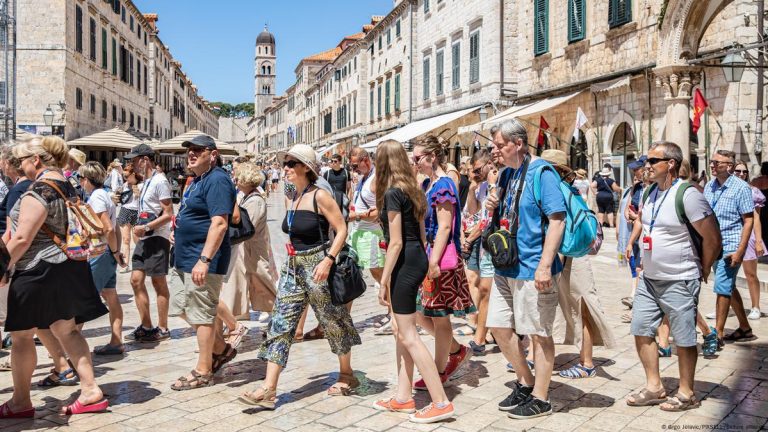A resurgent wave of travel is giving the world economy a lift, as international arrivals rebound and cash registers ring in tourism hotspots from the Mediterranean to Southeast Asia. Airlines are restoring routes, hotels are filling beds, and service-sector activity is accelerating, helping offset sluggish manufacturing and trade in several major markets.
The recovery is reshaping labor demand and shoring up external balances in tourism-reliant countries, with small businesses and local governments among the early beneficiaries. Leisure trips are leading the upswing, while corporate travel continues to lag, and China’s outbound tourism is only gradually normalizing. Economists say the rebound could add crucial momentum to global growth this year, though persistent inflation, capacity constraints, climate-related disruptions, and geopolitical tensions pose risks to the outlook.
Table of Contents
- Tourism Rebound Boosts Services Exports Jobs And Disinflation Tailwinds Across Europe Asia And The Americas
- Capacity Constraints Threaten Momentum As Airlines Hotels And Consulates Face Staffing Backlogs And Rising Costs
- Policy And Business Playbook Streamline Visas Expand Secondary Routes Invest In Skills And Sustainable Infrastructure To Spread Benefits
- Final Thoughts
Tourism Rebound Boosts Services Exports Jobs And Disinflation Tailwinds Across Europe Asia And The Americas
A revitalized wave of international travel is feeding into stronger services exports, faster job creation and nascent disinflation as airlines restore capacity, visa backlogs clear and lodging supply normalizes. Tourism receipts are bolstering external balances and fiscal revenues, while cooling effects from airfare and accommodation categories give central banks modest breathing room even as core services remain sticky. Market focus is shifting to whether elevated demand can be sustained into the shoulder season without reigniting price pressures, with policymakers eyeing tourism-driven foreign-exchange inflows to rebuild buffers and support investment in transport and urban infrastructure.
- Europe: Mediterranean hotspots report high occupancy and longer stays, aiding current-account repair in Southern economies and underpinning service-sector hiring from hospitality to logistics.
- Asia: Favorable exchange rates and reopened air corridors lift arrivals to Japan and Southeast Asia, driving record inbound receipts and broadening retail footfall beyond capital cities.
- Americas: Mexico, the Caribbean and U.S. Sunbelt markets see resilient demand; rising capacity eases travel costs, supporting employment gains while tempering headline inflation contributions.
- Macro signals: stronger non-goods balances, firmer local-currency revenues for service providers, and emerging price relief in travel-linked components as supply catches up with demand.
Capacity Constraints Threaten Momentum As Airlines Hotels And Consulates Face Staffing Backlogs And Rising Costs
A demand surge is colliding with tight labor markets and higher input costs, forcing carriers to trim schedules, hotels to ration inventory, and consulates to extend appointment windows-cooling the pace of recovery even as bookings remain robust. Industry executives cite crew shortages, maintenance delays, wage inflation, and security vetting bottlenecks as the chief pinch points, with knock-on effects including elevated airfares and room rates, longer visa lead times, and increased cancellations or itinerary changes. Small businesses and price-sensitive travelers are bearing the brunt, while corporate planners shift to flexible contracts and regional itineraries to contain risk. Analysts warn that without targeted policy support and rapid productivity gains, pricing power will persist into peak seasons, squeezing margins and widening performance gaps between capacity-rich hubs and underserved routes.
- Visible pressure points: longer call-center and airport wait times; higher average fares and ADRs; reduced flight frequencies; fewer last-minute rooms; visa slots booked weeks in advance.
- Operator responses: accelerated hiring and cross-training; selective capacity restoration; dynamic pricing; partnerships for overflow accommodation; digital self-service and identity verification.
- Policy priorities: streamlined visa processing; temporary staffing flexibilities; fast-track security clearances; investment in aviation maintenance capacity; incentives for hospitality workforce return.
- Risks if unresolved: demand diversion to nearer markets; reputational damage from service shortfalls; a two-speed rebound favoring well-staffed gateways; persistent inflation in travel-related services.
Policy And Business Playbook Streamline Visas Expand Secondary Routes Invest In Skills And Sustainable Infrastructure To Spread Benefits
With visitor numbers accelerating, governments and operators are pivoting from recovery to scale, prioritizing frictionless entry, wider connectivity, and resilient capacity that channels tourism dollars beyond saturated hubs. Early movers are rolling out digital visas and risk-based screening to cut queues, funding secondary-city links to unlock new itineraries, and backing skills pipelines that lift service quality and wages. At the same time, investment is tilting toward low‑carbon infrastructure and climate resilience to protect assets and communities, while blended finance models crowd in private capital and require clear metrics on local benefit.
- Streamline entry: Expand e‑visas, visa waivers, and advance passenger processing; harmonize health and security standards.
- Expand secondary routes: Incentivize airlines and rail to add point‑to‑point services; upgrade regional airports and intermodal links.
- Invest in skills: Fund apprenticeships, micro‑credentials, and SME digitalization to lift productivity and inclusion.
- Build sustainably: Prioritize energy‑efficient terminals, water‑wise resorts, resilient transit, and nature‑positive attractions.
- Mobilize capital: Use PPPs and blended finance; tie incentives to measurable local spend, jobs, and emissions outcomes.
- Share data: Establish public‑private analytics hubs to manage flows, price scarcity, and spread demand year‑round.
Final Thoughts
As peak travel periods approach, the durability of tourism’s recovery will be tested by booking pipelines, air capacity, and price dynamics. A sustained revival would reinforce service-led growth even as manufacturing remains mixed and fiscal support recedes, with knock-on benefits for employment, trade in services, and investment across destinations.
Risks persist-capacity bottlenecks, inflation pressures, geopolitical tensions, and climate-related disruptions could temper gains. Policymakers and markets will track UNWTO arrivals, airline seat capacity, hotel occupancy, and card-spend data for signs of momentum. For now, the return of travelers is adding a measurable tailwind to global output-and, if managed with prudent policy and sustainable practices, could help extend the expansion into 2025.


